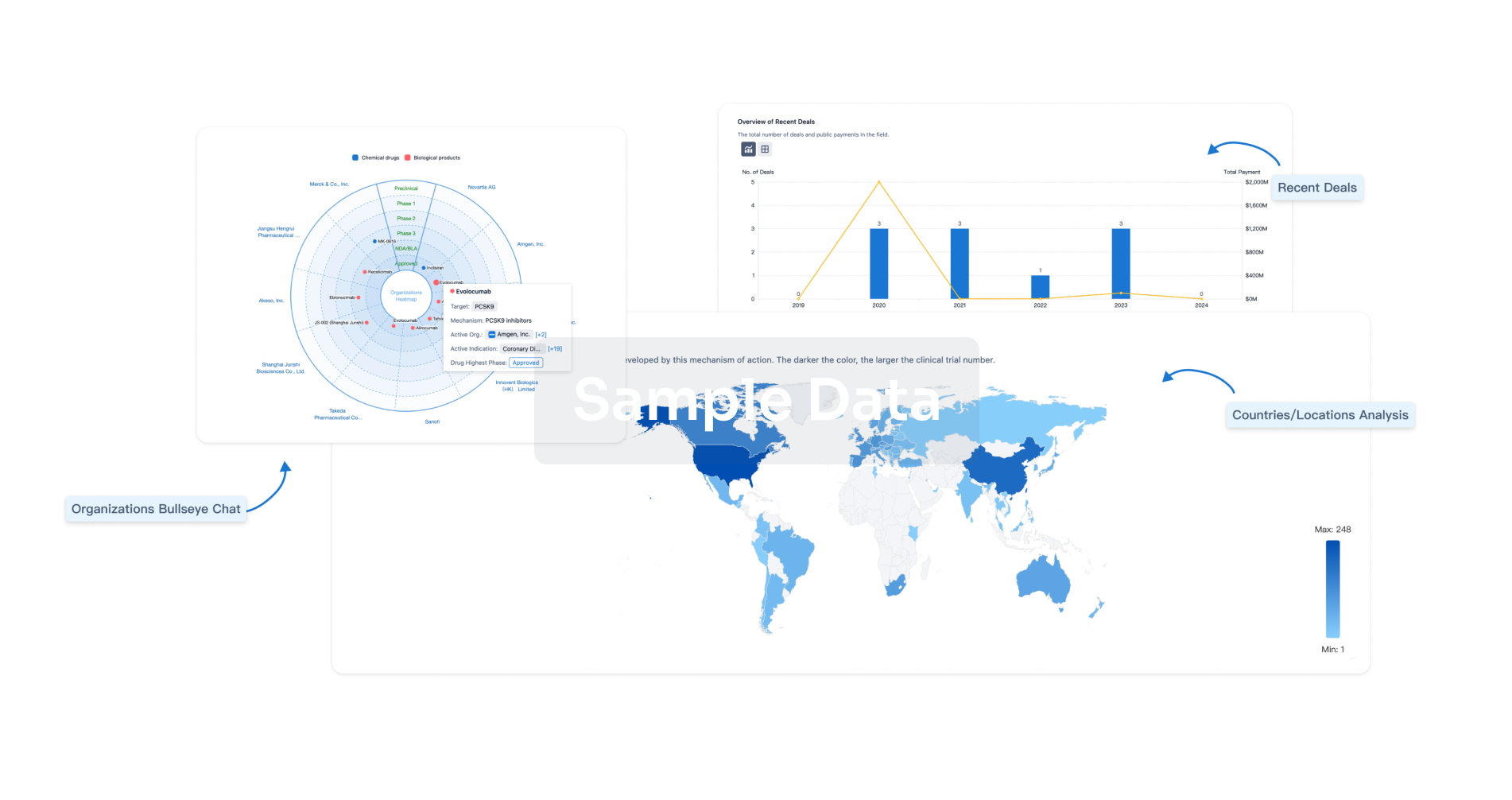Request Demo
Last update 08 May 2025
Protein kinase N (PKN) family
Last update 08 May 2025
Basic Info
Synonyms- |
Introduction- |
Related
5
Drugs associated with Protein kinase N (PKN) familyMechanism LRRK2 inhibitors [+3] |
Active Org. |
Originator Org. |
Active Indication |
Inactive Indication- |
Drug Highest PhasePhase 2 |
First Approval Ctry. / Loc.- |
First Approval Date20 Jan 1800 |
Target |
Mechanism PKN1 inhibitors |
Active Org. |
Originator Org. |
Inactive Indication- |
Drug Highest PhasePreclinical |
First Approval Ctry. / Loc.- |
First Approval Date20 Jan 1800 |
Target |
Mechanism PKN3 inhibitors |
Active Org. |
Originator Org. |
Active Indication |
Inactive Indication- |
Drug Highest PhasePreclinical |
First Approval Ctry. / Loc.- |
First Approval Date20 Jan 1800 |
5
Clinical Trials associated with Protein kinase N (PKN) familyNCT06572397
An Open-Label Study Assessing the Ocular and Systemic Safety and Systemic Absorption of H1337 Ophthalmic Solution, 1% in Healthy Volunteers
The trial will evaluate the safety of one dose regimen of H-1337 [1% twice daily (b.i.d.)] in both eyes in healthy volunteers.
Start Date16 Sep 2024 |
Sponsor / Collaborator |
NCT05913232
A Phase 2b Randomized, Double-masked, Active-controlled, Dose-response Study of the Safety and Efficacy of H-1337 in Subjects With Primary Open Angle Glaucoma (POAG) or Ocular Hypertension
The trial will evaluate the safety and efficacy of 3 dose regimens of H-1337 [0.6% twice daily (b.i.d.), 1.0% b.i.d. and 1.0% once in the morning (q.a.m.), and timolol maleate (0.5%, b.i.d.) in both eyes for 28 days.
Start Date28 Aug 2023 |
Sponsor / Collaborator |
NCT03452033
A Phase 1/2a Randomized, Double-masked, Placebo Controlled, Dose-ranging Study of the Safety and Efficacy of H-1337 in Subjects With Primary Open Angle Glaucoma (POAG) or Ocular Hypertension
The study will evaluate the safety, tolerability, and preliminary efficacy of three concentrations of H-1337 and vehicle administered twice daily in a parallel group, double-masked design for 28 days of dosing in patients with elevated intraocular pressure (IOP).
Start Date15 Mar 2018 |
Sponsor / Collaborator |
100 Clinical Results associated with Protein kinase N (PKN) family
Login to view more data
100 Translational Medicine associated with Protein kinase N (PKN) family
Login to view more data
0 Patents (Medical) associated with Protein kinase N (PKN) family
Login to view more data
531
Literatures (Medical) associated with Protein kinase N (PKN) family01 Dec 2025·Molecular Biology Reports
CDK5: Insights into its roles in diseases
Review
Author: Zhou, Yali ; He, Yi ; Jiang, Tingting ; Wu, Yongli ; Yan, Jianguo ; Zhang, Chong ; Wang, Jiahui ; Zhou, Dongsheng
01 Jun 2025·SLAS Technology
Identifcation of the FGF family as therapeutic targets and prognostic biomarkers in the microenvironment of head and neck squamous cell carcinoma
Article
Author: Wei, Jian ; Xu, Yingjiao ; Gao, Yingchun ; Zhang, Xuan ; Tian, Yumei ; Liu, Xuqian ; Nie, Minhai ; Zhang, Li
01 May 2025·Insect Biochemistry and Molecular Biology
The role of insulin receptor InR in photoperiod-regulated reproductive diapause of Chrysoperla nipponensis
Article
Author: Xu, Yongyu ; Li, Dandan ; Xu, Minghui ; Kabissa, Jeremiah Joe ; Zhong, Shaofeng ; Kang, Zhiwei ; Wang, Xiao ; Chen, Zhenzhen ; Kong, Xue
Analysis
Perform a panoramic analysis of this field.
login
or

AI Agents Built for Biopharma Breakthroughs
Accelerate discovery. Empower decisions. Transform outcomes.
Get started for free today!
Accelerate Strategic R&D decision making with Synapse, PatSnap’s AI-powered Connected Innovation Intelligence Platform Built for Life Sciences Professionals.
Start your data trial now!
Synapse data is also accessible to external entities via APIs or data packages. Empower better decisions with the latest in pharmaceutical intelligence.
Bio
Bio Sequences Search & Analysis
Sign up for free
Chemical
Chemical Structures Search & Analysis
Sign up for free



